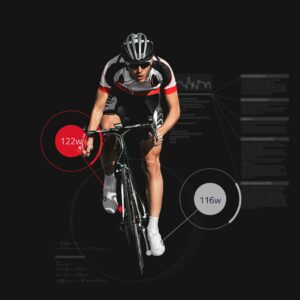Maximise Your Pedalling Power With Assioma
Perfecting your pedalling stroke can bring you free power and endurance, and Favero's Assioma pedals help measure it all.
Picture-perfect pedalling is more than pushing down on the pedals. It also involves pulling them up and around in an act that cyclists call pedalling circles. Ultimately, the goal is to eliminate any “dead spots” in your pedal stroke—at no point in each pedal stroke should your legs just be coming along for the ride; they should always be applying some pressure to propel you forward. The smoother and more evenly powered your pedal stroke, the more efficient it is, which allows you to ride faster with less exertion.

Favero’s Assioma Duo pedals ship with the firm’s proprietary IAV metrics, which help you perfect your pedalling stroke. Many power meters calculate power using the estimated average angular velocity per rotation instead of the real Instantaneous Angular Velocity value: this may introduce an additional error of up to 4.5% compared to declared accuracy. Assioma, instead, thanks to its exclusive IAV Power system and an on-board gyroscope guarantees the same ±1% accuracy with any pedalling style: even with oval chainrings. More about this later – for now, let’s take a look at what you can do to smooth out your stroke…
Let’s Get You Pedalling Perfectly
Biomechanical experts have found that when riders pedalled using the following technique, they were able to produce the same amount of power (as measured in watts) at a heart rate that was about five beats per minute lower. Simply put: They rode the same speed with less work. This is how to do it.
READ MORE ON: cadence cadence drills favero assioma partner content pedalling dynamics power pedals



